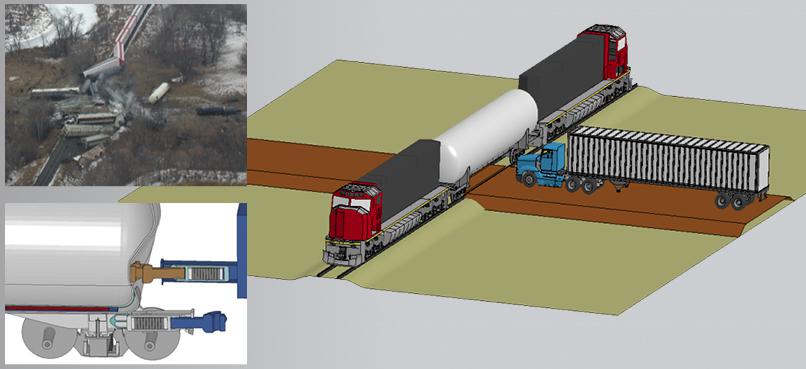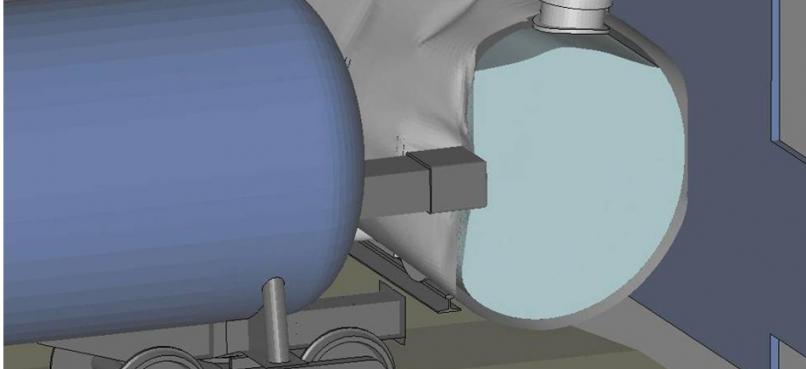Rail Crashworthiness Analysis
Challenge
Train crashes are complex, large-scale, dynamic impact events that occur over long durations. The inherent size of a train of railcars can also make physical testing costly and ineffective. An excellent alternative is to conduct high-fidelity computational modeling of railcar structures to analyze these events and design more effective crash energy management systems, reducing injury and catastrophic events. The challenge in this modeling comes from the complexity of the structural and material behaviors, especially at high rates of impact. Additional complications, such as fluid-structure interaction from pressurized fuel tanks, change the dynamics of the problem and may cause additional concerns during impact events.
Solution
Our engineers model and accurately predict full-scale train crash tests and apply validated models to the design of new and improved structures and the analysis of real-world accidents. ARA created a model to simulate a 35-mph impact of a railcar into a rigid wall, matching the damage seen externally on the rail car and evident in the primary under frame collapse. This validated model is used for further analysis and redesign.
An essential part of nonlinear finite element analysis (FEA) is the mechanical characterization of materials. ARA specializes in testing as well as constitutive and failure modeling of the nonlinear dynamic response of materials. We regularly develop models from mechanical test data and implement them in FEA codes.
ARA personnel have conducted crashworthiness analysis of many types of rail cars, including tank cars, locomotives, passenger rail cars, and light rail vehicles. For tank cars, we have successfully predicted both local punctures and catastrophic ruptures during train derailments and impacts from highway vehicles. We designed a bumper specifically for retrofitting to existing light rail vehicles in order to reduce occupant injury, reduce automobile override, and provide an option for a less aggressive front end design. We are actively designing new crush zones of passenger rail vehicles using crash energy management principles.
ARA’s research results are being used to develop tank car designs and to inform rulemaking by the Federal Railroad Administration (FRA).



